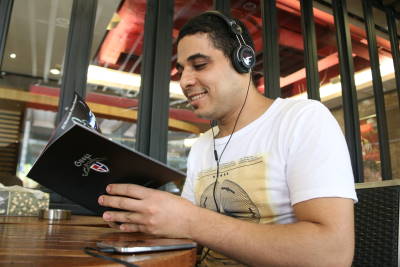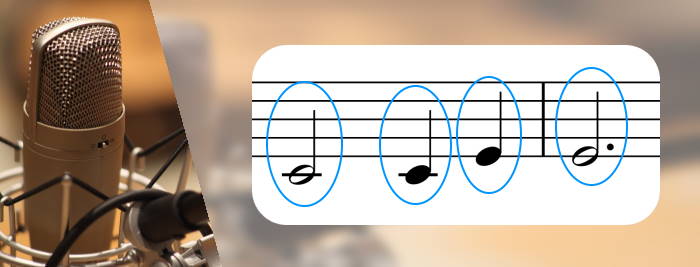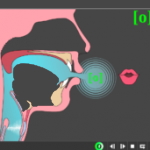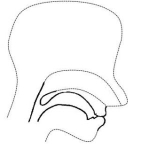6 Tips to pronounce French Sounds / French Phonetics
For beginners or non-beginners

Oct 15, 2020
How to improve French Phonetics ?
If I could compare French pronunciation to music, I would say:
- Learning How to pronounce French sounds (Phonetics) is like learning Musical Notes
- Learning how to pronounce Sentences is like Playing Music : How you say it (See : Pronunciation of Sentences)

This page is about How to pronounce French sounds (Phonetics)
1/ Make sure you know the 37 basic French sounds

French Phonetics has 37 French sounds (and French alphabet has 26 letters).
If you struggle with pronunciation, verify first you know these 37 sounds and you did not miss something.
The word “au”, in this sentence : “Ce soir, à six heures, on va au cinéma”
There are 3 “Phonèmes” :
_ The word “au” has its sound : [o] (Sound due to the combination of letters “a” and “u”)
_ “a” has its own sound and its pronunciation is [a]
_ “u” has its own sound and its pronunciation is [y]
Examples of written forms (Also called “Graphèmes”) for the sound [o] :
Chapeau, Vélo, Bientôt, au
2/ Verify your ear can well distinguish the 37 French Sounds
Note : If you are planning to take tefaq exam, be aware that French phonetics test for the TEFAQ exam is 10 out of 60 questions (Oral comprehension, section D, phonetics). Being able to distinguish sounds well is a winner.

How is it possible to produce the right sound if you cannot identify and control it ?
This ability to distinguish sounds allows you to control the sounds you produce and increase your listening skills.
So , I strongly suggest :
- To do a test to verify your ear can distinguish all sounds
- If needed, do exercises to Educate your Ear
Training your ear helps a lot to identify weaknesses and to be in control.
There are several websites where you can find exercises.
I would recommend to start with a website well structured and easy to use if you want to quickly do a verification (see below : “A website to train your ear”)
French sounds discrimination exercises target students’ usual weaknesses (sounds that do not exist in the mother tongue and confusion between similar sounds). In addition they are really suitable for TEF / TEFAQ phonetic tests.
The TEFAQ oral comprehension test has 10 out of 60 questions to test your ability to distinguish sounds (Section C, Phonetics. Examples : Entendu/Attendu, Boule/Poule, Vu/Bu, De/Deux/Du, …).
It could be around 25% of the correct answers needed to pass the Tef / Tefaq.
A good ear training guarantees success for 9 of 10 questions.
You can educate your ear online by practicing many discrimination exercises on close sounds. It will take a few hours, but it is worth it because it helps to detect the difficulties you are experiencing and to enhance your ability to distinguish sounds. Exercises are easy to do, very efficient, and when done you will keep a sharp ear for life.
I recommend to use the tools of : phonetique.free.fr . This website is well structured and very practical, even if user interface is old.
(It requires a browser with a Flash-player and to spend 10 minutes to understand how it works. After that, everything is fine and go smoothly. For the Flash-player some students use an open-source add-on (RUFFLE). ![]() Before using this add-on, please check if appropriated for your environment)
Before using this add-on, please check if appropriated for your environment)
Spend an additional 5-10 minutes to analyze how the website works and which French sounds you want to test. It will not be wasted time.
Kind of exercises you can do on this website :
If you have a difficulty in pronunciation, ask yourself : is it because I don’t place my mouth correctly or is it because I cannot identify, distinguish and control correctly the sound I want to produce ?
To be able to distinguish French sounds very well is an asset, saves energy, helps go faster, and help to be in control the quality of the sounds you produce. It is a Winner !
3/ Place mouth the right way to produce the right sounds

The mouth is a musical instrument and the shape of this instrument must be modified to produce the desired sound: the position of the lips and the tongue, the opening of the mouth, the passage of air (nasal), .. .
If you place your mouth incorrectly, your pronunciation will not be clear (or maybe almost clear in a low voice, but probably very different when you speak out loud), and your message will be subject to misinterpretation.
So to gain confidence, learn how to place your mouth correctly, and train yourself to obtain automatisms.
Watching videos can help a lot to correct difficulties. Ask a French native speaker for help is a also a good solution. You can also work in front of a mirror (or film yourself with a phone) to watch the position of your mouth and to improve them.
A website with animations :
Invert the process : from a mouth position find a sound :
4/ Master pronunciation of syllables and words

Since there is a big difference between the decoding of a written message and an oral one, to go faster, know well :
- “les liaisons”,
- “les accents”,
- Silent letters : “E”, “H”
- Know the simplifications / omissions in colloquial French
Find more explanations and links in mini-tips
More about “Les liaisons” :
Some exercises on “les liaisons”
Read with a French native speaker to have a feedback
or
Read alone (while recording), and I suggest this method :
- Use audios with transcripts
- Analyze the text, imagine “les liaisons” and underline
- Read the text while recording yourself
- Listen to the audio
- Compare it with your recording and identify your difficulties
- Read again aloud while listening to the audio
5/ Train your muscles and over-articulate

Do practice exercises to train your muscles .
Practice Tongue-twisters and you will be surprised at your progress.
Kids, adults, actors, VIP, … practice Tongue Twisters in any country, any language to get a clear pronunciation and a good diction.
- To place youth mouth correctly
- To train muscles (and not to be quickly tired )
- To get automatism
- To keep it naturally after a while
Kids, adults, actors, VIP, … practice Tongue Twisters in any country, any language to get a clear pronunciation.
Here are some examples of tongue twisters (click on pictures) :
How to practice:
- Speak aloud and begin by slowly pronouncing a tongue twister and exaggerate the movements of your mouth (over-articulate).
- Then you go at a normal speed and you always exaggerate the pronunciation.
- Afterwards, you go faster and you always exaggerate the pronunciation.
- Working 10 minutes a day, after a few days (after a few weeks for some difficult tongue twisters), the result is excellent: a good pronunciation with almost natural movements.
- You can also train with friends and make a game: who speaks the fastest while keeping a good pronunciation? Guaranteed laughter!
A tip: for the first time, register with your phone, as a reference, to see your progress after a few days.
A tongue twister can be difficult at first. Here is some actions you can do :
- Work in front of a mirror and watch the movements of your mouth when you speak well and when you say badly. Do not forget to move your jaw, to exaggerate movements.
- Watch mouth movements on online videos
- Check how you place your tongue, your lips, your jaw, …
- Forget your apprehension (to feel like “stupid” or “funny”) because it’s a real winner. Don’t hesitate to open your jaws and to exaggerate movements
- There is not enough exaggeration if you don’t feel that your muscles are working
- Ask the help of a francophone or a teacher to correct you
6/ For a word alone : Put Tonic Stress on last pronounced syllable

In French, for a word alone, put Tonic Stress on last pronounced syllable.
Meaning is : on the stressed syllable, put more intensity and a slightly longer pronunciation.
- More intensity on last syllab : restaurant / restaurant
- What is a longer pronunciation ? restaurant / restaur a n t
- More words : voiture, tablette, téléphone, cinéma, j’adore, j’étudie, restaurant
- Same words with an article or a pronom : une voiture, une tablette, un téléphone, un cinéma, j’adore, j’étudie, un restaurant
This is where the tonic accent is put when pronouncing a word alone, in a sentence, it’s different.

- Know the 37 basic French sounds
- Educate your ear
- Place mouth the right way
- Master pronunciation of syllables and words
- Train your muscles and over-articulate
- Put Tonic Stress on last syllable




